LJ Krumenacker is a PhD student at Montana State University. LJ’s work was highlighted on several news agency’s. See phys.org’s report here.
The mid-Cretaceous is a time poorly represented in the terrestrial fossil record of North America. While paleontologists are getting a better understanding of this interval in North America, most of this information is coming from the Cedar Mountain Formation of eastern Utah. The Wayan Formation of eastern Idaho provides a look at a fauna hundreds of kilometers north that was deposited in a drier more upland environment. Though the ages of both formations are the same, the fossil assemblages of each formation are markedly different, though this may be due largely to taphonomic biases. An important new site in the Wayan Formation is the Robison Bonebed, I have named the site after my friend and mentor Steve Robison, a retired USFS paleontologist.
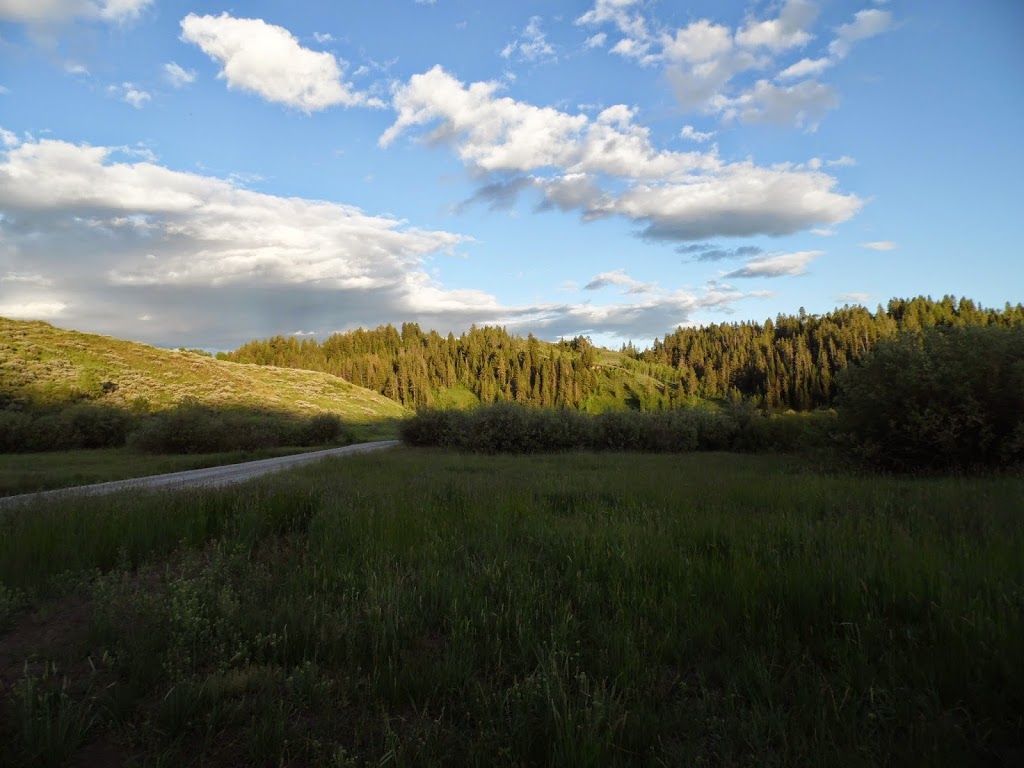 |
| Classic field area of the Wayan Formation |
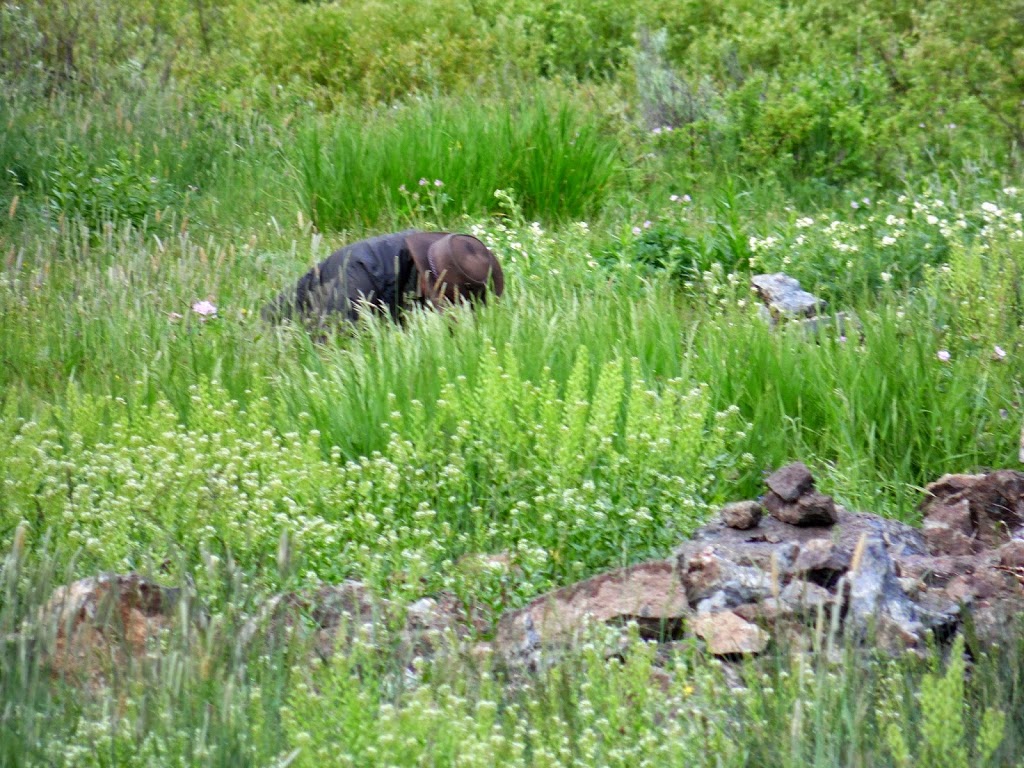 |
| LJ collecting fossils in the Robison bonebead |
A little background on the mid-Cretaceous age Wayan Formation: It is a very thick (1,344 meters in the Tincup Canyon area of Caribou County) packet of mature paleosols and subordinate sandstones and conglomerates (4:1 ratio) deposited in the latest Albian to Cenomanian foredeep of Idaho. Deposition was in response to uplifts associated with early movements of the Paris and Meade thrusts of the Sevier Orogeny.
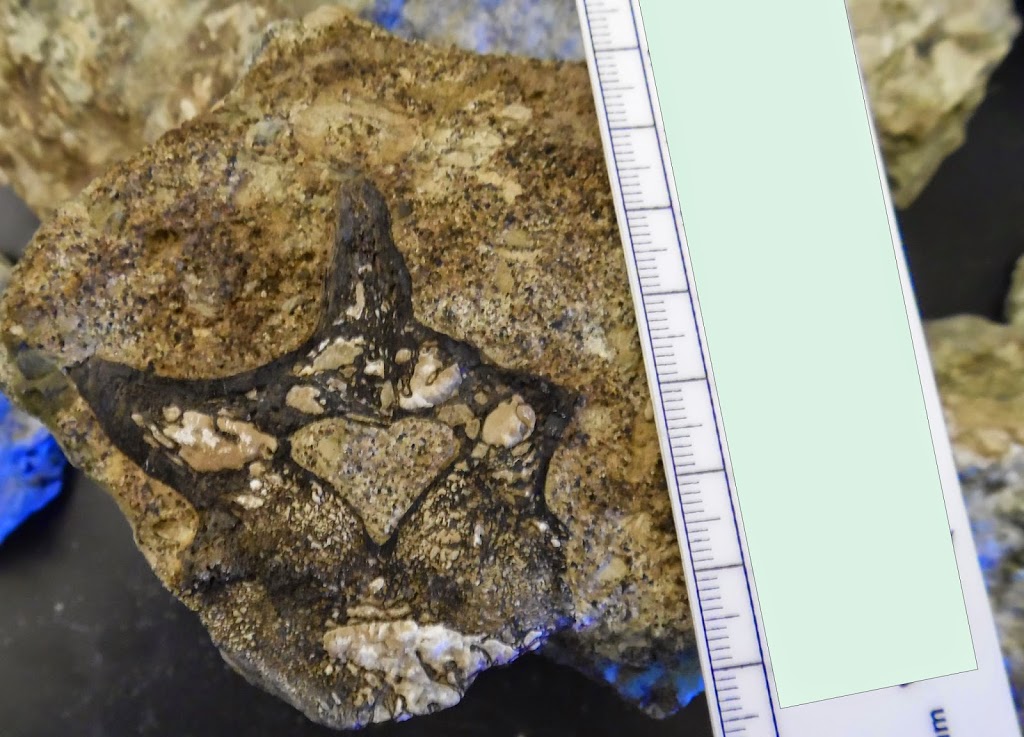 |
| Nodosaur vertebrae |
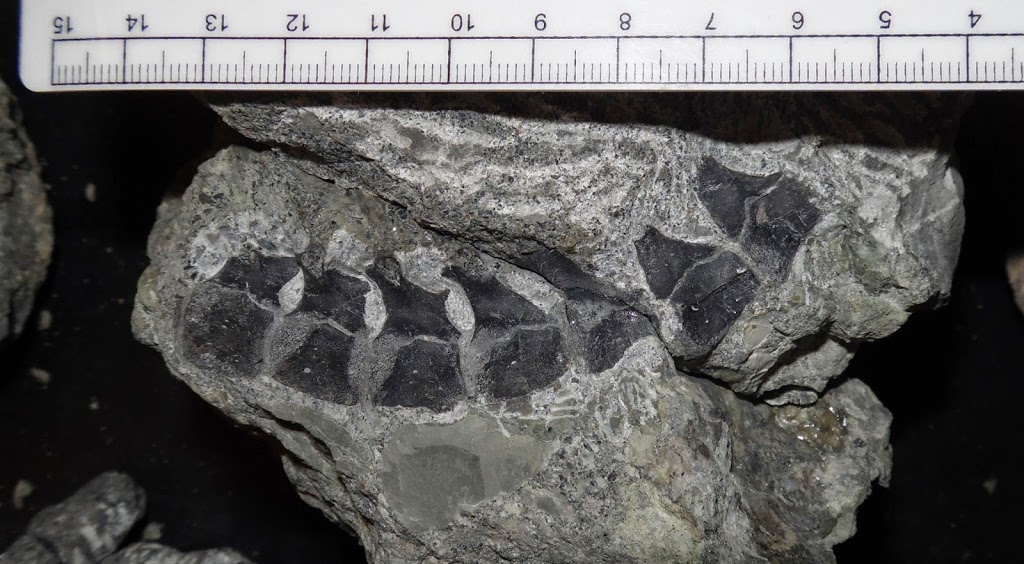 |
| Oryctodromeus cervical vertebrae |
The Robison Bonebed has easily turned into the most important multi-taxic site known from the Wayan Formation, and is arguably the oldest and most important multi-taxic fossil vertebrate site reported from Idaho. Though I wasn’t able to get good observations on the deposit before it was completely removed from the hillside by the construction work, from looking at the stratigraphic setting and lithology of the ex-situ blocks it appears to be a typical fluvial lag deposit. The fossiliferous lithology consists of fine-grained conglomerate containing sand, chert grains and pebbles, mudball and caliche clasts, and vertebrate bones, eggshell, and teeth. So far we have recovered over 100 fossils from the site. The fauna from the bonebed consists of:
- Oryctodromeus: A small burrowing ornithopod represented by teeth and bones
- Hadrosaur: Known from a tooth. These large ornithopods were fairly new arrivals on the Cretaceous scene at this time and would be dominant in later Late Cretaceous faunas.
- Nodosaurs: Known from teeth, armor scutes, and vertebrae.
- Giant oviraptorosaur: Represented by very isolated eggshell fragments
- Cf. Neovenatorid allosauroid: This animal is represented by a small vertebra from a young animal.
- Dromaeosaurs: Known from teeth.
- Coelurosaurs/indeterminate small theropod(s): Known from teeth and bones.
- Large, maybe Allosaurus-sized, fish-eating theropod: This animal is known from teeth. The teeth are distinctive and I can’t seem to find anything that matches them.
- Triconodontid mammals: Known from teeth.
- Non-cimolodontan multituberculate mammal: Known from a jaw with teeth.
- Indeterminate mammals: Known from teeth.
- Crocodylians: Known from teeth
- Turtles: Fairly common shell fragments.
- Semionotid fish: Known from crushing teeth and a few scales.
While this may not seem like a huge diversity of taxa compared to formations such as the Morrison or Hell Creek, this one site has a much greater diversity than has been found in my and others cumulative 15 years of work at all other sites in the Wayan Formation. A lot of work remains to be done, and it will likely be a multi-year post doctoral effort for me. A lot of that work will involve processing for microvertebrates and fossil preparation. When this work is completed we should have a much greater understanding of the mid-Cretaceous faunas of northern North America.
You can see an abstract about the Robison Bonebed presented at GSA (here).
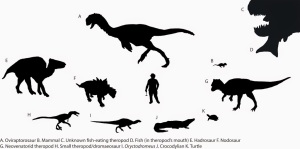 |
| Fauna of the Robison Bonebed |
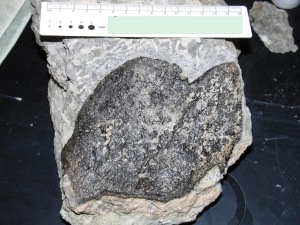 |
| Nodosaur Armor Scute |
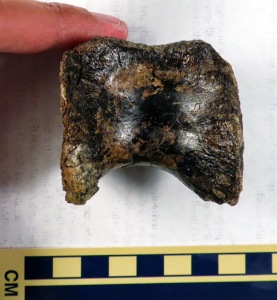 |
| Theropod Vertebra |
Photos courtesy of the paleontology program of the U.S. Forest Service, Department of Agriculture, Curation of Paleontology Resources, and the Earth Sciences Division, John A. White Paleontological Repository, Idaho Museum of Natural History.
 This work is licensed under a Creative Commons Attribution-NonCommercial-ShareAlike 4.0 International License.
This work is licensed under a Creative Commons Attribution-NonCommercial-ShareAlike 4.0 International License.







![]() This work is licensed under a Creative Commons Attribution-NonCommercial-ShareAlike 4.0 International License.
This work is licensed under a Creative Commons Attribution-NonCommercial-ShareAlike 4.0 International License.